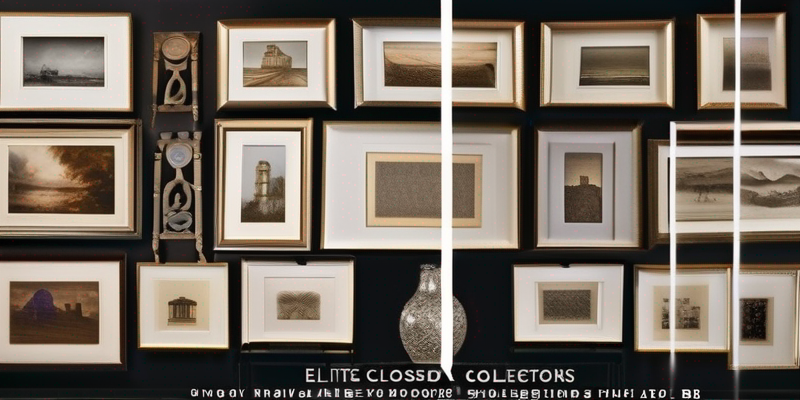In the rarefied world of ultra-high-net-worth collectors, the most extraordinary artworks often remain hidden from public view, sequestered in private mansions, penthouses, and purpose-built storage facilities around the globe. While museums display only about 5% of their collections at any given time, private collections represent an even more exclusive domain—where masterpieces by Picasso, Monet, or emerging contemporary talents may be seen only by a privileged few. Yet for the dedicated art aficionado, these private collections represent the ultimate cultural pilgrimage—offering intimate, curator-led experiences far removed from the crowds of major museums. This guide unveils the closely guarded pathways to accessing these sanctuaries of personal artistic vision, where relationships, timing, and insider knowledge are the currencies that matter most.
Cultivating the Right Connections
Marrakech:
Access to private collections begins with strategic relationship building within the art world's inner circles. Start by becoming a patron member at prestigious museums like the Guggenheim, Tate Modern, or Centre Pompidou, where collector circles often organize private visits to members' homes. These institutional connections provide legitimacy and context for your interest, opening doors that remain firmly closed to casual inquiries.
Fez:
Art advisors and gallerists represent another crucial gateway to private collection access. Establishing a relationship with respected advisors—even through initial consultations or smaller purchases—can eventually lead to invitations to client events hosted in collectors' homes. In cities like London, New York, and Hong Kong, certain galleries maintain close relationships with major collectors and occasionally arrange private viewings for serious clients and fellow collectors.
Chefchaouen:
Perhaps most valuable are connections made through specialized art tour companies catering exclusively to high-net-worth individuals. Organizations like The Cultivist, One Art Nation, and ART SMART offer membership programs that include curated visits to private collections normally inaccessible to the public. While memberships can range from $2,500 to $10,000+ annually, they provide structured access to collections that might otherwise require years of relationship building.
The Global Map of Private Collection Destinations
To truly experience Morocco, dive into its rich culture. Here are some highlights:
Culinary Classes:
Certain global destinations have emerged as epicenters for serious private collections, often with varying degrees of accessibility. In Europe, Brussels stands out for its concentration of accessible private collections, with collectors like Walter Vanhaerents, Alain Servais, and the Maramotti family occasionally opening their spaces by appointment. Paris offers the Fondation Louis Vuitton and Collection Pinault, while Switzerland's Gstaad and Zurich hide numerous mountaintop and lakeside private museums.
Music Festivals:
In the United States, Miami has transformed into a private collection mecca, with the de la Cruz Collection, the Rubell Museum (formerly a private collection), and the Margulies Collection offering regular visiting hours—a rarity in the private collection world. Los Angeles collectors increasingly open their homes during events like Frieze Week, while New York's most exclusive collections typically require personal connections for access.
Artisanal Workshops:
Asia presents perhaps the most exciting frontier for private collection visits, with a new generation of collectors building museum-quality spaces. In South Korea, the Amorepacific Museum of Art represents a corporate collection with limited public access, while Japan's Naoshima island features the Benesse House Museum and related sites. Hong Kong's private collectors increasingly showcase their holdings during Art Basel week, though typically by invitation only.
Timing Your Approach: Art World Calendar Opportunities
Plan your visit around one of Morocco's vibrant festivals to experience the culture at its best:
Marrakech International Film Festival:
Strategic timing dramatically increases your chances of accessing private collections, with certain calendar moments creating rare windows of opportunity. The international art fair circuit—particularly VIP preview days at events like Art Basel, Frieze, FIAC, and TEFAF—represents prime networking territory for meeting collectors. Many collectors host exclusive events in their homes during these periods, with invitations often extended through galleries or shared collector connections.
Fez Festival of World Sacred Music:
Biennials and major museum openings similarly prompt collectors to showcase their holdings. The Venice Biennale, occurring every two years, sees numerous Venetian palazzos opened for temporary exhibitions from private collections. During the 2022 Biennale, over 40 private collection spaces welcomed visitors—though most required advance reservations or personal invitations.
Gnaoua World Music Festival:
Beyond these global events, many cities have established annual private collection tours as fundraisers for local arts organizations. The Melbourne Private Collection Tour, Berlin's Private Art Collections Weekend, and similar events in Chicago and Dallas provide structured access to homes and private museums not normally open to visitors. Securing tickets to these charitable events—often priced between $200-$1,000—can be considerably easier than attempting to arrange visits independently.
The Etiquette of Private Collection Visits
Traveling sustainably ensures that Morocco's beauty is preserved for future generations. Here are some tips:
- Successfully navigating private collection visits requires understanding the unwritten rules that govern these exclusive experiences. First and foremost, recognize that you are entering someone's personal space—regardless of how museum-like the presentation may appear. Dress appropriately (business casual at minimum), arrive precisely on time, and never attempt to photograph works without explicit permission. Many collectors prohibit photography entirely, particularly in residential settings.
- When requesting visits through intermediaries, be specific about your interests and background. Collectors and their staff are more likely to accommodate visitors who demonstrate genuine knowledge and appreciation for the collection's focus. A brief note mentioning specific works or artists of interest, along with your own collecting history or professional connection to the arts, significantly improves your chances of approval.
- Perhaps most importantly, understand that money alone cannot guarantee access to the most exclusive collections. Unlike other luxury experiences, private collection visits operate on a relationship economy rather than a purely financial one. Attempting to offer payment for access is considered gauche in most collecting circles. Instead, consider supporting the collector's preferred cultural institutions or charitable causes as a more appropriate gesture of appreciation.
The pursuit of private collection access represents one of luxury travel's most refined pleasures—combining cultural enrichment with exclusive social experiences unavailable to conventional tourists. While gaining entrée to these guarded sanctums requires patience, knowledge, and interpersonal finesse, the rewards are incomparable: intimate encounters with masterpieces in the contexts their owners intended, often accompanied by personal stories and insights unavailable in any museum setting. As the art world continues evolving, with younger collectors increasingly embracing transparency and accessibility, opportunities for experiencing these private troves will likely expand—though the most exceptional collections will always reserve their most meaningful experiences for those who approach with genuine appreciation and respect for the private nature of collecting.

